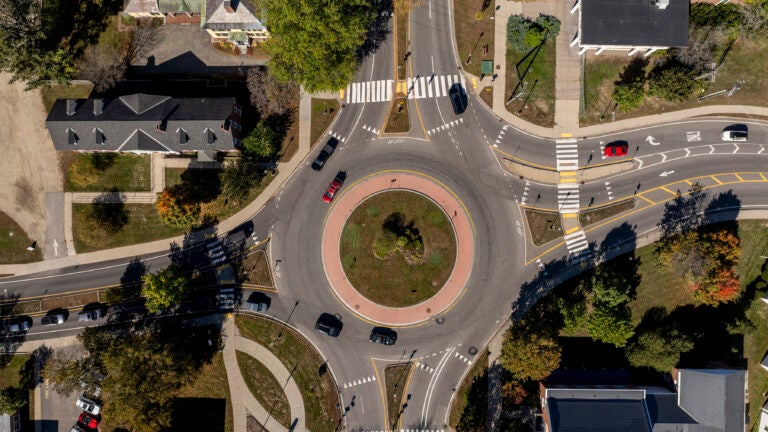
"These circular intersections are easily confused with rotaries or traffic circles, but are distinctly free of traffic lights. Instead they require drivers to yield to traffic before entering and are constructed to be slower-moving while minimizing stopping. These features make modern roundabouts significantly safer than other intersections. Because of the position of the cars, they can drastically reduce the chances of potentially deadly crashes, like T-bones or head-on collisions."
"And because cars can generally keep moving without idling at red lights, they also burn less gasoline. This means each vehicle spends less time pumping out planet-warming pollutants, like carbon dioxide. Installing roundabouts also improved Keene's air quality, which used to rank among the worst in New England. In a study published in 2018, a former Keene city planner found soot and other small airborne particulates, which can be harmful to human health, had fallen by up to 40%."
Keene, New Hampshire, progressively installed roundabouts, reaching seven by 2023. Modern roundabouts eliminate traffic signals, require entering drivers to yield, and keep vehicles moving at slower speeds while minimizing stops. These design features reduce severe collision types such as T-bones and head-on impacts and decrease vehicle idling, lowering fuel consumption and carbon emissions. Local air quality improved, with a 2018 study by a former city planner finding soot and fine particulate concentrations fell by up to 40%. Reduced idling also shortened travel times for local drivers, and city public works leadership implemented recent installations.
Read at Boston.com
Unable to calculate read time
Collection
[
|
...
]